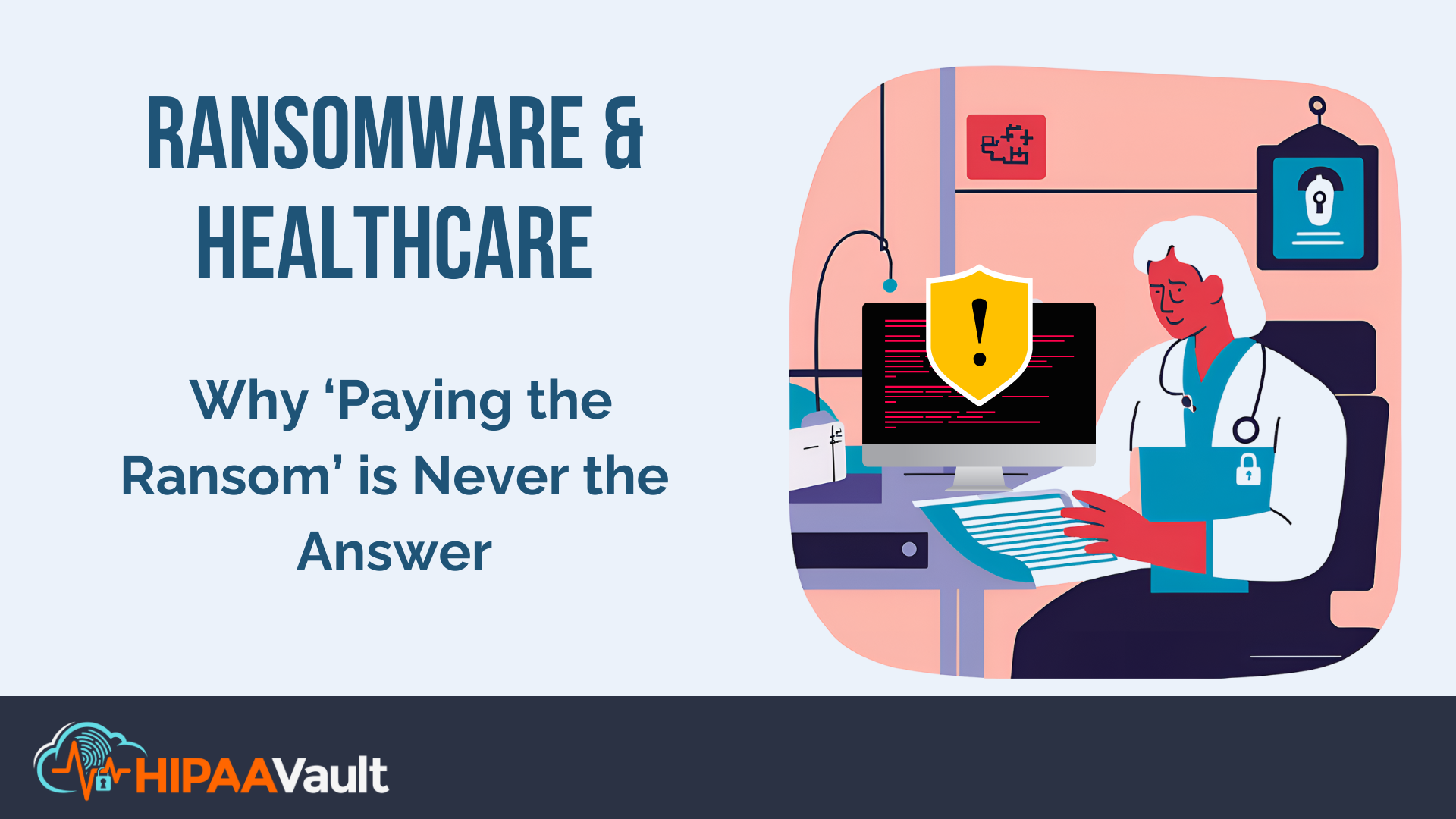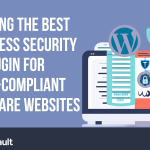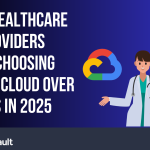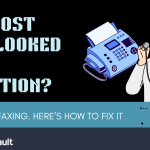
Ransomware & Healthcare: Why ‘Paying the Ransom’ is Never the Answer
“We Had No Choice But to Pay”—Why That’s a Dangerous Myth in Healthcare Ransomware Response
When ransomware paralyzes hospital systems, the decision to pay can feel like the only option. Patient care is halted, critical systems are frozen, and the clock is ticking. It’s understandable—the stakes are uniquely high in healthcare. But this very urgency is what makes the industry such a prized target for cybercriminals.
The belief that “we had to pay” is one of the most costly misconceptions in healthcare IT today.
Ransomware attacks on the sector are not only increasing in volume—they’re evolving in method and intensity. Sophisticated attackers now go beyond encryption, often stealing data before locking it, creating a double extortion scenario: pay to unlock your systems, and pay again to keep your patient data off the dark web.
But here’s the truth: paying the ransom rarely guarantees recovery, and in many cases, it only invites more attacks. It’s a short-term gamble with long-term consequences—legal, financial, operational, and ethical.
At HIPAA Vault, we’ve helped countless healthcare organizations harden their environments and recover from cyber threats—without ever paying a ransom. This article explores why “just pay it” is the wrong answer and what a real, HIPAA-compliant ransomware defense looks like.
The Growing Threat of Ransomware in Healthcare
The healthcare sector’s high-value data, limited cybersecurity resources, and critical need for uptime create a perfect storm for ransomware. Attackers know that disrupting patient services can cause panic, increasing the likelihood of a payout.
Healthcare organizations are particularly vulnerable due to:
- High volumes of Protected Health Information (PHI), which is valuable on the black market and subject to strict regulatory protections under HIPAA.
- Legacy systems and underfunded IT departments, which may lack modern security defenses.
- Round-the-clock operations, where even short downtimes can delay life-saving treatments.
- Staff unfamiliar with cybersecurity threats, making social engineering and phishing attacks more effective.
This convergence of high stakes and low preparedness is why ransomware healthcare attacks continue to dominate cyber threat landscapes.
Real-World Examples: When Ransomware Strikes, Lives Are at Risk
The impacts of ransomware in healthcare aren’t just about lost files or IT costs—they’re about lives disrupted, diagnoses delayed, and treatments deferred.
Consider these high-profile incidents:
- Universal Health Services (UHS) suffered one of the largest ransomware attacks in U.S. healthcare history. The breach impacted over 400 facilities, forcing clinicians to use paper records, reroute patients, and cancel procedures. Estimated costs topped $67 million.
- Scripps Health, a San Diego-based system, endured weeks of outages due to ransomware. Electronic health records, portals, and scheduling systems were inaccessible. More than 147,000 patient records were compromised, and lawsuits followed.
These attacks highlight the multi-layered damage ransomware inflicts—not only technical but reputational, operational, and legal.
1. How Ransomware Works
Initial Access
Cybercriminals typically gain entry via phishing emails, malicious attachments, or compromised login credentials. Remote Desktop Protocol (RDP) vulnerabilities and unsecured VPNs are also common attack vectors.
Lateral Movement
Once inside, attackers don’t immediately launch ransomware. They escalate privileges, map the network, and identify critical systems and backup servers to maximize damage.
Payload Execution
The ransomware is deployed to encrypt essential files and systems. Hospitals may find their EMR systems, diagnostic tools, and patient portals rendered useless in minutes.
Extortion
Victims receive ransom notes—often threatening public data leaks in addition to permanent data loss. Attackers demand payment, typically in cryptocurrency, to release decryption keys.
This multi-step process demonstrates why early detection and continuous monitoring are essential.
2. Why Ransomware is So Devastating for Healthcare
Disruptions to Patient Care and Emergency Services
Ransomware doesn’t just freeze data—it stalls clinical operations. Ambulatory services may be diverted, surgeries postponed, and diagnostic workflows halted. Patient safety is directly compromised.
HIPAA Penalties for Compromised Patient Data
Under HIPAA, a ransomware event is considered a presumed breach unless the organization can demonstrate there was no unauthorized access or disclosure of PHI. This is a high burden of proof. Failure to meet it can result in civil penalties ranging from thousands to millions of dollars.
Long-Term Financial and Reputational Damage
The costs don’t end with ransom or penalties. Organizations often face:
- Legal fees and regulatory fines
- Increased cybersecurity insurance premiums
- Costly forensic investigations
- Brand damage and loss of patient trust
Recovery can take months—far longer than the attackers promise.
3. Why Paying the Ransom is a Mistake
No Guarantee of Data Recovery
Even if an organization pays, there is no assurance that data will be restored. The FBI has repeatedly warned that some attackers walk away after payment—or provide corrupted decryption keys.
Encouraging Further Attacks
Payment rewards and sustains criminal operations. Worse, it signals to attackers that your organization is an easy target, potentially leading to repeat incidents or being added to darknet “victim” lists.
Legal and Compliance Risks
Paying ransom to sanctioned foreign actors may violate U.S. Treasury Department OFAC regulations, subjecting your organization to additional fines and legal consequences. Moreover, payment does not absolve you from reporting requirements or HIPAA violations.
4. How to Protect Your Organization from Ransomware
Regular Backups and Disaster Recovery Planning
Maintain encrypted, immutable backups stored offsite and test them frequently. Cloud-based Disaster Recovery as a Service (DRaaS) ensures that systems can be rapidly restored without relying on threat actors.
Strong Endpoint Security and Network Monitoring
Deploy enterprise-grade antivirus, anti-malware, and intrusion detection/prevention systems (IDS/IPS). Implement Zero Trust network architectures to limit lateral movement and enforce least-privilege access.
Employee Training to Recognize Phishing Attacks
Human error remains the leading cause of ransomware entry. Train staff to spot phishing emails, avoid suspicious links, and follow security protocols. Consider quarterly simulations and real-time phishing reporting tools.
5. How HIPAA Vault Defends Against Ransomware
At HIPAA Vault, our clients benefit from a security-first cloud environment tailored for healthcare—built on Google Cloud Platform (GCP) and designed to prevent, detect, and mitigate ransomware risks.
24/7 Threat Monitoring and Response
Our dedicated security team provides live monitoring 24/7/365, with incident response times under 15 minutes. Advanced threat intelligence helps us neutralize attacks before they take hold.
Encrypted Backups and Disaster Recovery
We implement automated, offsite backups with AES-256 encryption and geographic redundancy. DRaaS enables rapid system restoration while keeping PHI secure.
Proactive Penetration Testing and Vulnerability Scanning
HIPAA Vault regularly conducts penetration tests and vulnerability scans, identifying and remediating gaps before they can be exploited. Our practices align with NIST, FedRAMP, and HITRUST CSF frameworks to ensure regulatory readiness.
🔐 Learn more about HIPAA Vault’s Secure Hosting Services.
Conclusion: Prevention Is the Smartest Payment Plan
Ransomware may be inevitable—but its consequences don’t have to be. Paying the ransom is a costly, risky decision that often leads to more damage, not less. The best path forward is prevention: robust cloud security, backup and disaster recovery, employee training, and constant monitoring.
HIPAA Vault is your frontline defense. With proven HIPAA-compliant infrastructure, security expertise, and world-class customer support, we help healthcare organizations stay secure—without ever needing to negotiate with criminals.
📞 Let’s talk today. Reach out to 760-290-3460, sales@hipaavault.com or explore our HIPAA-compliant solutions to fortify your ransomware defenses.





